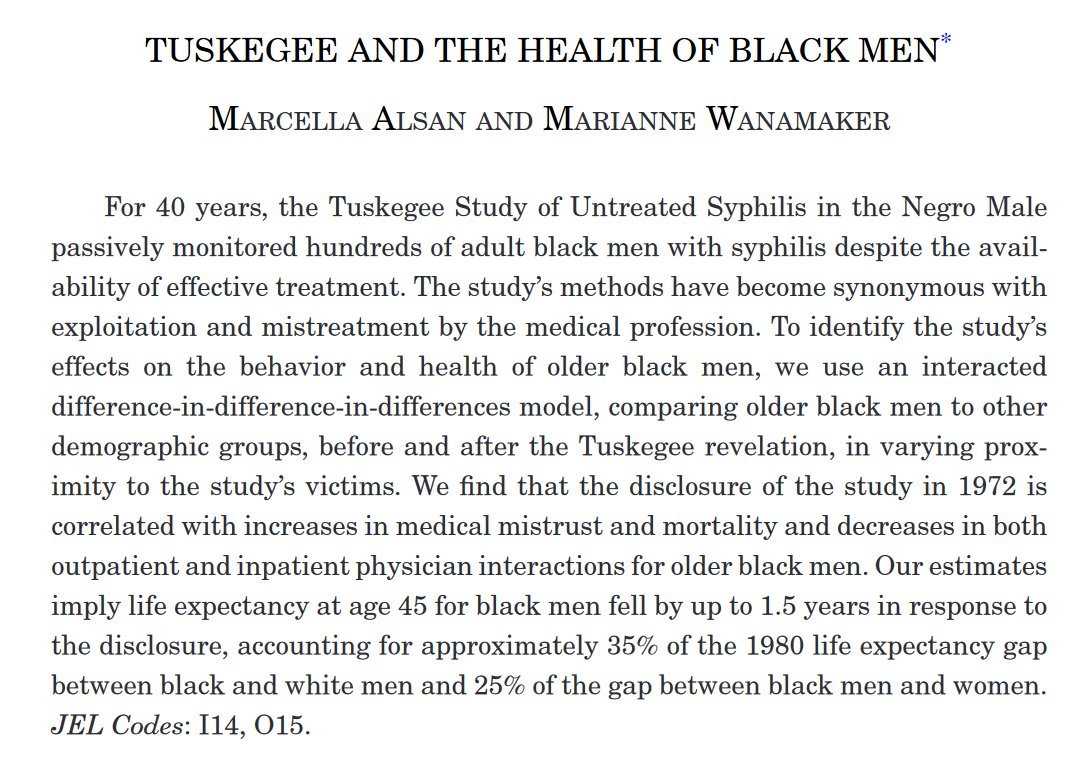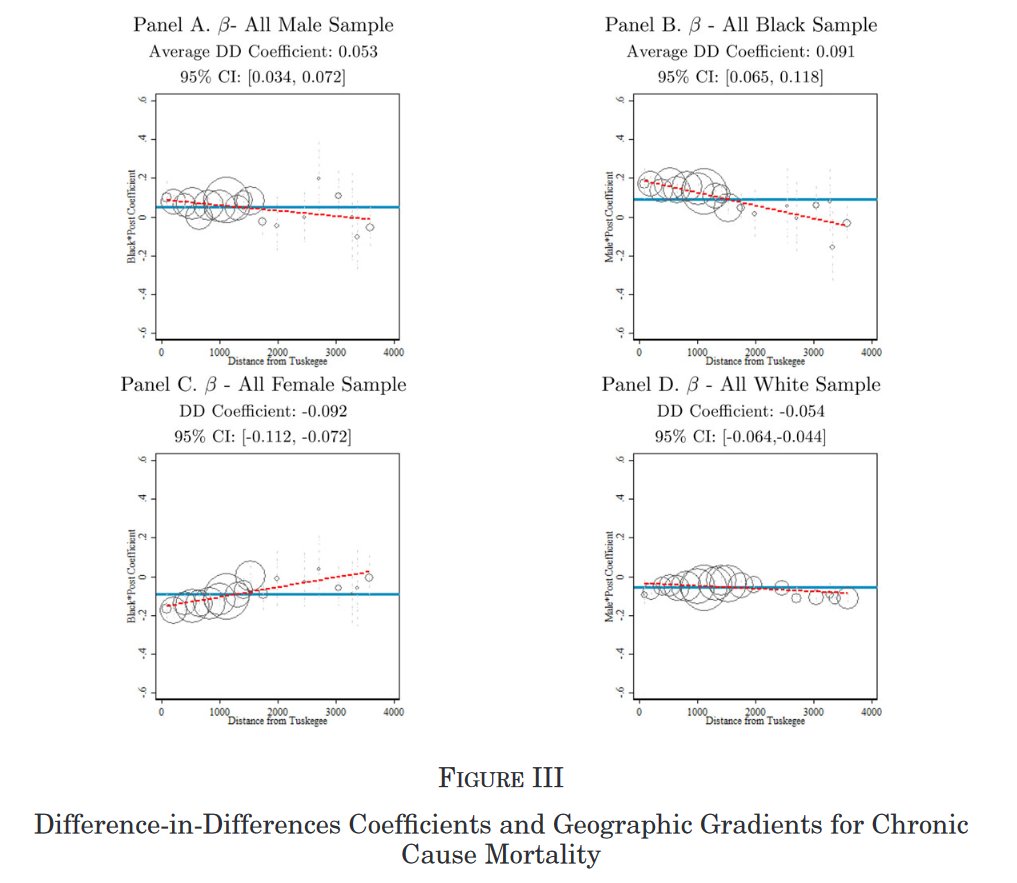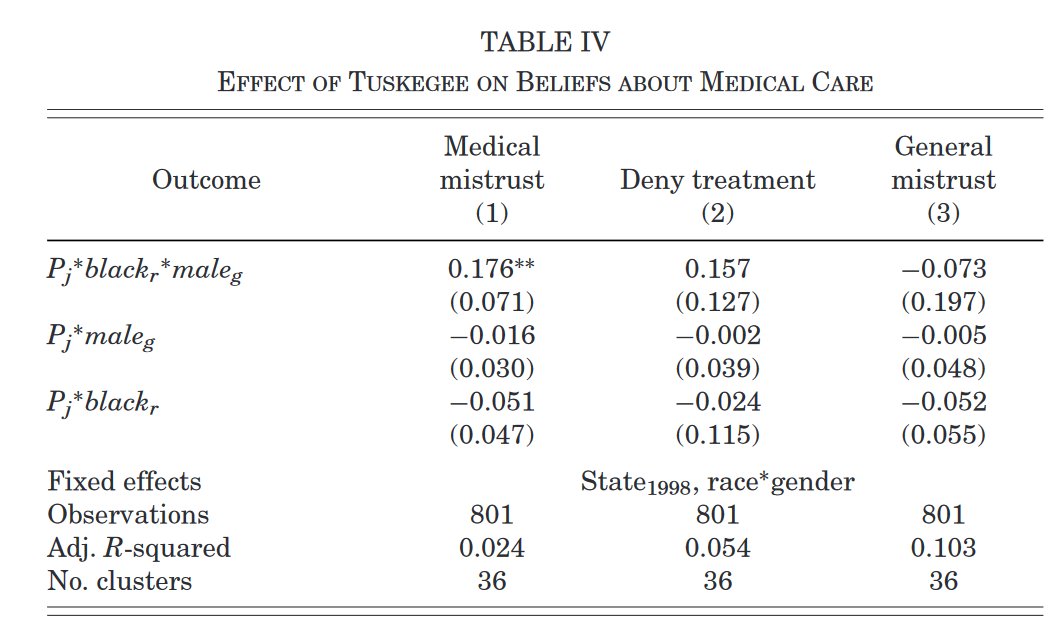As an economic historian, I can’t help but think about the incredible persistence of racial disparities. But I am hopeful that recent events will lead to a turning point.
To provide a little context about where we are, here’s some research on historical black/white disparities.
To provide a little context about where we are, here’s some research on historical black/white disparities.
1) @TrevonDLogan examines Reconstruction and shows that black politicians increased per capita tax revenue, which helped to reduce the black-white literacy gap. However, white politicians eventually reclaimed office and halted black progress.
https://doi.org/10.1017/S0022050719000755">https://doi.org/10.1017/S...
https://doi.org/10.1017/S0022050719000755">https://doi.org/10.1017/S...
2) Lisa Cook ( @drlisadcook) estimates that historical violence against blacks is negatively associated with black innovation. Violent acts (lynchings) led to >1,100 missing patents, compared to the 726 actual patents.
https://link.springer.com/article/10.1007/s10887-014-9102-z">https://link.springer.com/article/1...
https://link.springer.com/article/10.1007/s10887-014-9102-z">https://link.springer.com/article/1...
3) Melinda Miller studies the 1860-1900 Cherokee Nation, which provided free land to former slaves (i.e., the best evidence on “40 acres and mule”). Racial inequality was substantially reduced. What if Sherman’s order was fulfilled?
https://www.mitpressjournals.org/doi/full/10.1162/rest_a_00842">https://www.mitpressjournals.org/doi/full/...
https://www.mitpressjournals.org/doi/full/10.1162/rest_a_00842">https://www.mitpressjournals.org/doi/full/...
4) Logan/Parman ( @jmparman) find that black-white residential segregation increased substantially between 1880 and 1940. This increase occurred in the north and south, in urban and rural areas.
https://doi.org/10.1017/S0022050717000079">https://doi.org/10.1017/S...
https://doi.org/10.1017/S0022050717000079">https://doi.org/10.1017/S...
5) Residual segregation is associated with lower black home ownership, more lynchings, and higher mortality rates for blacks and whites. (Logan/Parman and sometimes Cook)
https://doi.org/10.1017/ssh.2018.21">https://doi.org/10.1017/s...
https://www.aeaweb.org/articles?id=10.1257/aer.p20171081
https://www.aeaweb.org/articles... href=" https://doi.org/10.1016/j.socscimed.2017.07.006">https://doi.org/10.1016/j...
https://doi.org/10.1017/ssh.2018.21">https://doi.org/10.1017/s...
https://www.aeaweb.org/articles?id=10.1257/aer.p20171081
6) Persistence matters. Andrews ( @rodprime), Casey ( @marcdcase), Hardy ( @bl_hardy) and Logan further find that 1880 residential segregation is negatively correlated with modern-day intergenerational mobility.
https://doi.org/10.1016/j.econlet.2017.06.018">https://doi.org/10.1016/j...
https://doi.org/10.1016/j.econlet.2017.06.018">https://doi.org/10.1016/j...
7) Jhacova Williams ( @jhacova) finds that counties with more lynchings in the late 19th/early 20th century have lower black voter registration rates today.
https://docs.google.com/viewer?a=v&pid=sites&srcid=ZGVmYXVsdGRvbWFpbnxqaGF3aWxsaWZpbGVzfGd4OjJmMGMyMDY2NjcwMzQyMTI">https://docs.google.com/viewer...
https://docs.google.com/viewer?a=v&pid=sites&srcid=ZGVmYXVsdGRvbWFpbnxqaGF3aWxsaWZpbGVzfGd4OjJmMGMyMDY2NjcwMzQyMTI">https://docs.google.com/viewer...
8) This persistence may be due to racial animus passed down across generations. Williams finds that places with more historical lynchings also have more Confederate-named streets today and greater black-white inequality.
https://docs.google.com/viewer?a=v&pid=sites&srcid=ZGVmYXVsdGRvbWFpbnxqaGF3aWxsaWZpbGVzfGd4OjZmNmEwYWIxZTM0MjllYTA">https://docs.google.com/viewer...
https://docs.google.com/viewer?a=v&pid=sites&srcid=ZGVmYXVsdGRvbWFpbnxqaGF3aWxsaWZpbGVzfGd4OjZmNmEwYWIxZTM0MjllYTA">https://docs.google.com/viewer...
9) The historical slave population also correlates with political outcomes decades later. Acharya/Blackwell ( @matt_blackwell)/Sen ( @maya_sen) find that whites in Southern counties w/ higher shares of slaves in 1860 are more racially conservative today.
https://doi.org/10.1086/686631 ">https://doi.org/10.1086/6...
https://doi.org/10.1086/686631 ">https://doi.org/10.1086/6...
10) Back to segregation. Seg  https://abs.twimg.com/emoji/v2/... draggable="false" alt="📈" title="Tabelle mit Aufwärtstrend" aria-label="Emoji: Tabelle mit Aufwärtstrend">due to white flight. For 1910-30, Shertzer ( @econhist_allday)/Walsh ( @econtrout) find 1 black arrival led to 1.9-3.4 white departures. For 1940-70, Boustan ( @leah_boustan) finds 2.7 white departures.
https://abs.twimg.com/emoji/v2/... draggable="false" alt="📈" title="Tabelle mit Aufwärtstrend" aria-label="Emoji: Tabelle mit Aufwärtstrend">due to white flight. For 1910-30, Shertzer ( @econhist_allday)/Walsh ( @econtrout) find 1 black arrival led to 1.9-3.4 white departures. For 1940-70, Boustan ( @leah_boustan) finds 2.7 white departures.
https://doi.org/10.1162/rest_a_00786
https://doi.org/10.1162/r... href=" https://doi.org/10.1162/qjec.2010.125.1.417">https://doi.org/10.1162/q...
https://doi.org/10.1162/rest_a_00786
11) There were a lot of black arrivals due to the Great Migration out of the south. I’m late to the party, but I am just now reading Isabel Wilkerson’s ( @Isabelwilkerson) book “The Warmth of Other Suns,” which is great so far. https://www.amazon.com/Warmth-Other-Suns-Americas-Migration/dp/0679763880">https://www.amazon.com/Warmth-Ot...
12) The Great Migration led to large economic gains. Collins/Wanamaker ( @mwanamak) find that the Migration explains a significant amount of black-white convergence between 1910 and 1930. See @leah_boustan‘s book on the migration.
https://www.aeaweb.org/articles?id=10.1257/app.6.1.220
https://www.aeaweb.org/articles... href=" https://www.jstor.org/stable/j.ctt1q1xrc2">https://www.jstor.org/stable/j....
https://www.aeaweb.org/articles?id=10.1257/app.6.1.220
13) Despite these gains, @EDerenoncourt finds that the Migration reduced upward mobility rates in northern cities. There was a backlash as cities responded w/ changes to institutions, like increased policing, which helps to explain reduced mobility. https://www.dropbox.com/s/l34h2avpjomylrb/derenoncourt_2019.pdf?dl=0">https://www.dropbox.com/s/l34h2av...
14) B/W earnings convergence since the 1940s has been *slow*. @PatBayerNC) and @KerwinKCharles show that including nonworkers (e.g. those incarcerated) leads to almost no convergence of earning ranks since 1940. There have been gains at the top though.
https://academic.oup.com/qje/article/133/3/1459/4830121">https://academic.oup.com/qje/artic...
https://academic.oup.com/qje/article/133/3/1459/4830121">https://academic.oup.com/qje/artic...
15) Relatedly, Collins/Wanamaker ( @mwanamak) show that since 1880, black sons ended up in lower-paying jobs than white sons *conditional* on the father’s status. As long as this intergenerational gap exists, black-white earnings will never converge.
https://www.nber.org/papers/w23395 ">https://www.nber.org/papers/w2...
https://www.nber.org/papers/w23395 ">https://www.nber.org/papers/w2...
16) However, research has repeatedly found that black outcomes have improved from higher quality public goods, particularly for education and health services. It appears that income inequality and incarceration has partially held back black economic progress, among other things.
17) For example, school desegregation improved outcomes. @ProfRucker estimates that desegregation increased black educational and occupational attainment, reduced incarceration, and improved adult health status.
https://www.nber.org/papers/w16664.pdf">https://www.nber.org/papers/w1... and
https://www.amazon.com/Children-Dream-School-Integration-Works/dp/1541672704/">https://www.amazon.com/Children-...
https://www.nber.org/papers/w16664.pdf">https://www.nber.org/papers/w1... and
https://www.amazon.com/Children-Dream-School-Integration-Works/dp/1541672704/">https://www.amazon.com/Children-...
18) The minimum wage matters too. @EDerenoncourt and @cmontialoux estimate that the 1967 extension of the minimum wage to agriculture and other industries explains >20% of the reduction of the black-white earnings gap during the Civil Rights Era.
http://www.clairemontialoux.com/files/DM2019.pdf">https://www.clairemontialoux.com/files/DM2...
http://www.clairemontialoux.com/files/DM2019.pdf">https://www.clairemontialoux.com/files/DM2...
19) Voting rights matter. Cascio ( @eucascio) and Ebonya Washington show that the 1965 Voting Rights Act increased black voter turnout and transfers from the state to local government for the provision of public goods, like education.
https://doi.org/10.1093/qje/qjt028">https://doi.org/10.1093/q...
https://doi.org/10.1093/qje/qjt028">https://doi.org/10.1093/q...
19a) Also see @snaidunl on how disenfranchisement via poll taxes and literacy tests lowered voting, black school quality and black income.
https://www.nber.org/papers/w18129 ">https://www.nber.org/papers/w1...
https://www.nber.org/papers/w18129 ">https://www.nber.org/papers/w1...
20) Desegregation didn& #39;t just happen for schools. Desegregation of hospitals reduced the infant mortality gap and educational gap decades later. (Almond/Chay/Greenstone + Chay/Guryan/ @BhashMazumder)
https://papers.ssrn.com/sol3/papers.cfm?abstract_id=961021
https://papers.ssrn.com/sol3/pape... href=" https://www.nber.org/papers/w15078 ">https://www.nber.org/papers/w1...
https://papers.ssrn.com/sol3/papers.cfm?abstract_id=961021
21) However, poor medical outcomes for African Americans are partially due to mistrust of the system. 35 percent of the 1980 black-white male life expectancy gap can be attributed to the fallout from the Tuskegee Syphilis study (Alsan/Wanamaker).
https://doi.org/10.1093/qje/qjx029">https://doi.org/10.1093/q...
https://doi.org/10.1093/qje/qjx029">https://doi.org/10.1093/q...
22) That& #39;s it for now, but there is a ton of research out there that I missed/don’t have time to get to (e.g., the importance of school quality, the freedman’s bureau, convict lease system, etc.). Please send along others I missed. There is a lot I still need to learn.

 Read on Twitter
Read on Twitter

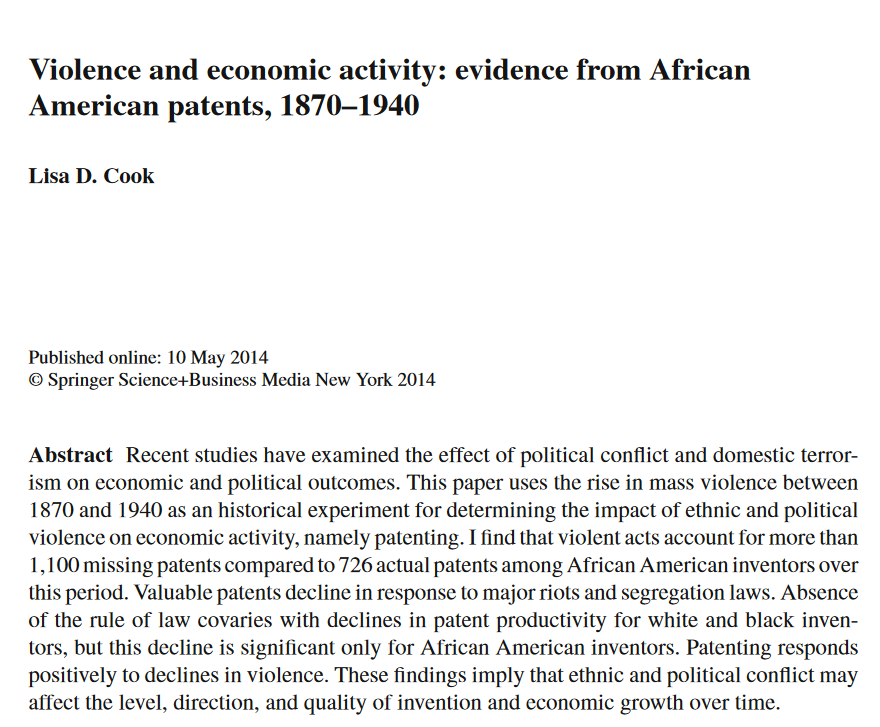

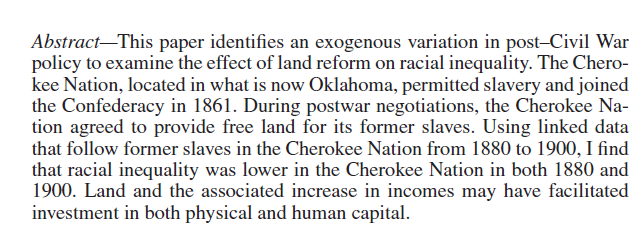
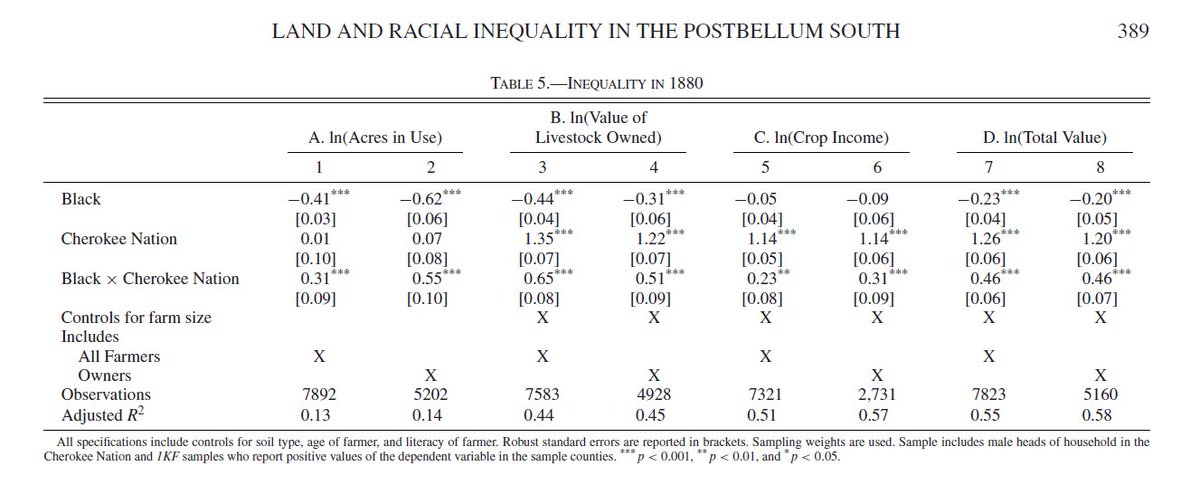

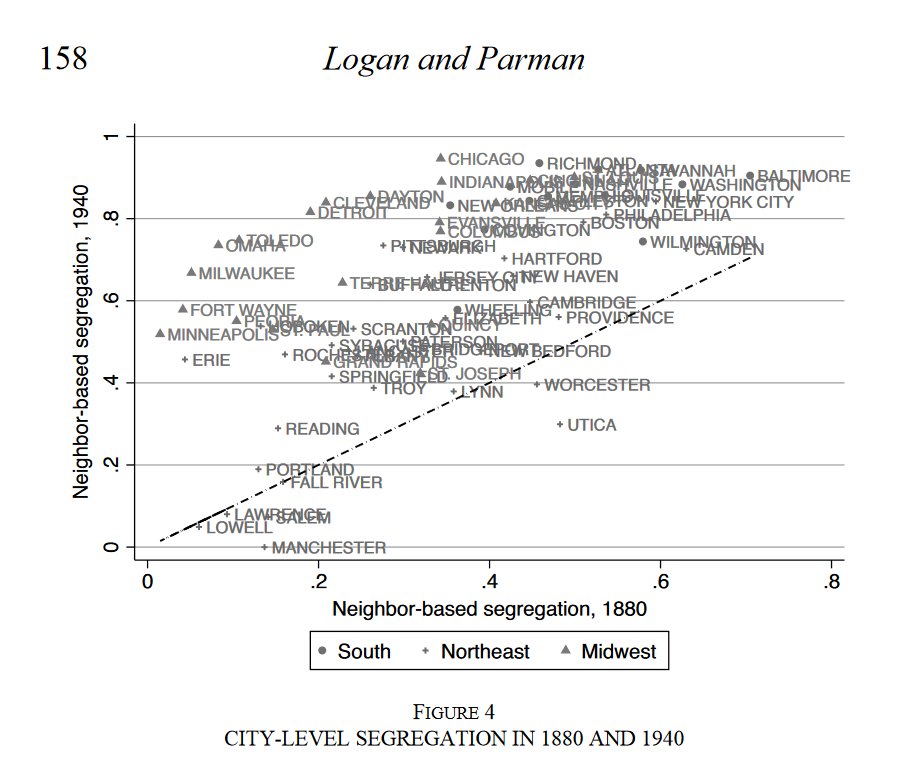

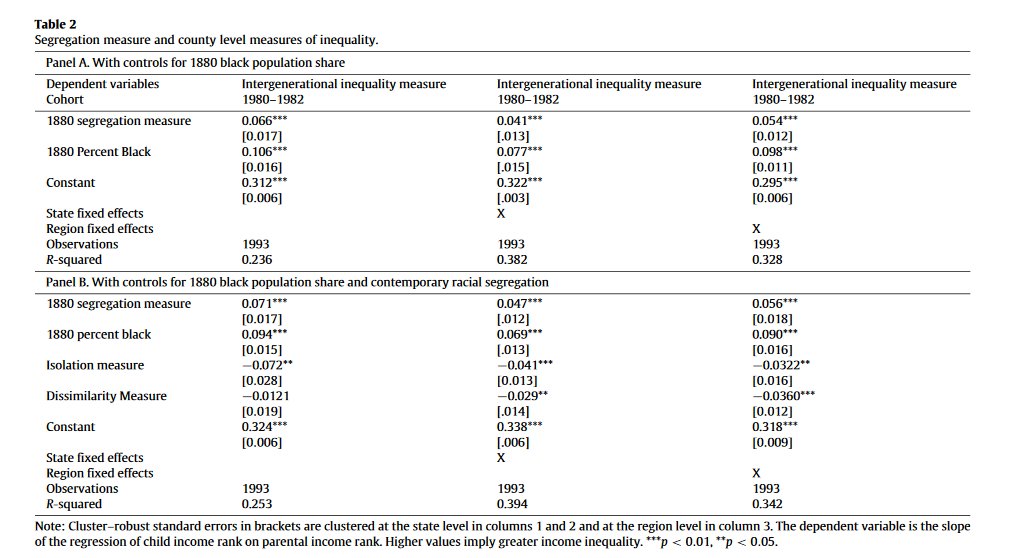

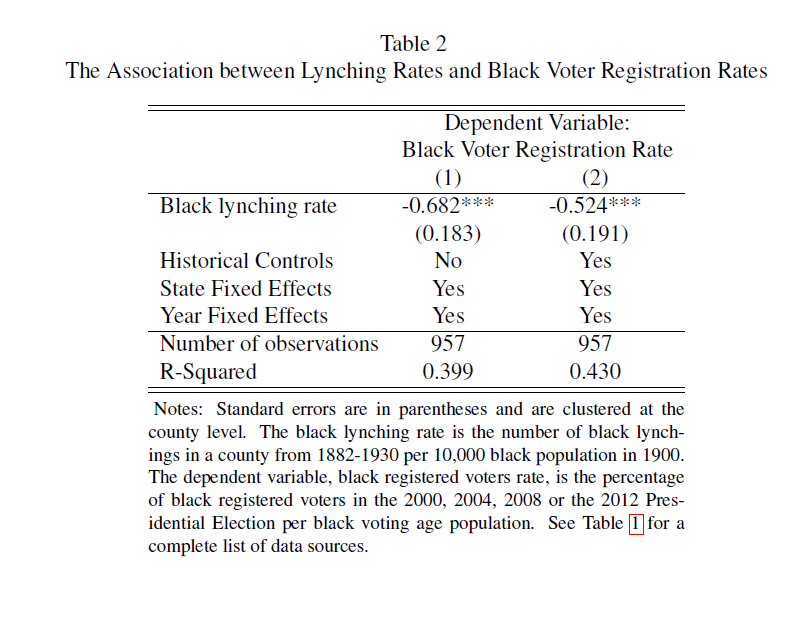
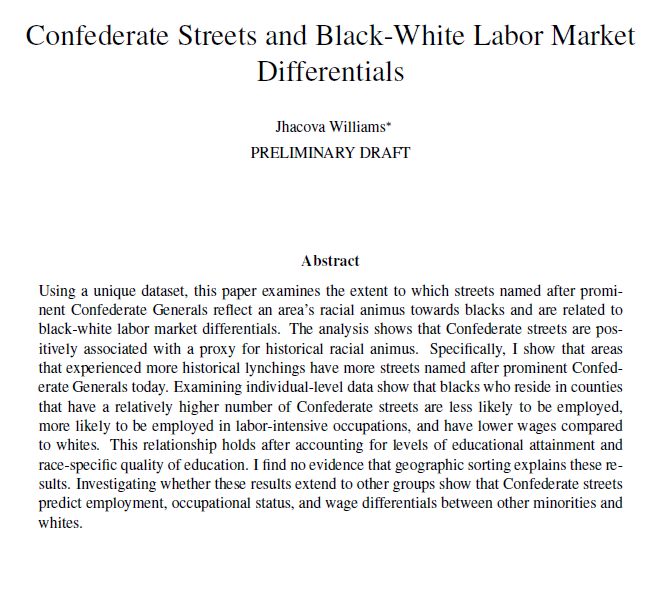

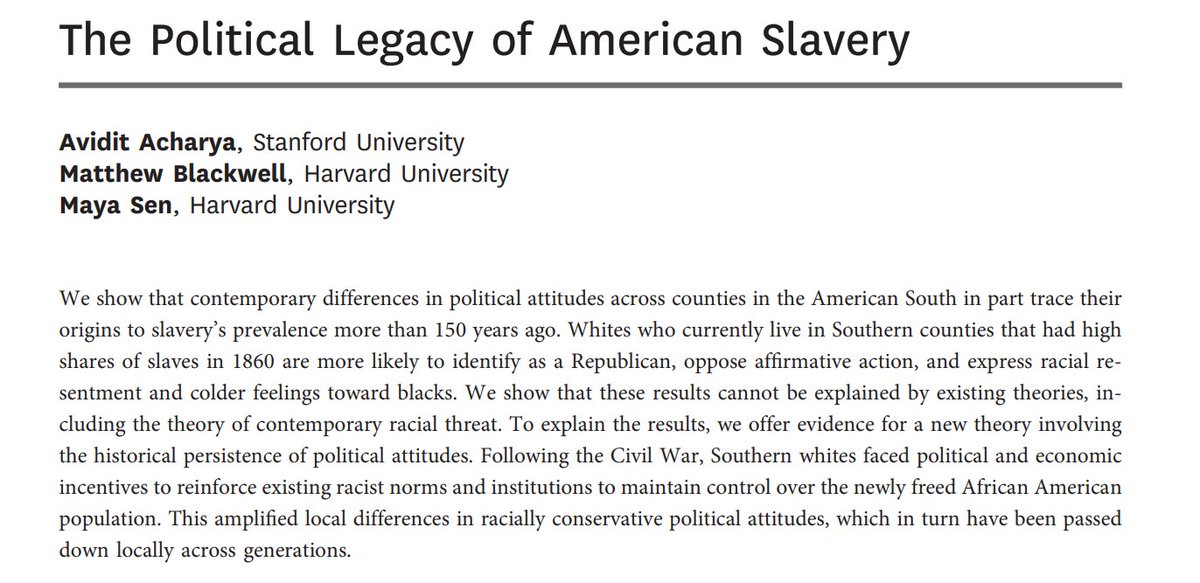
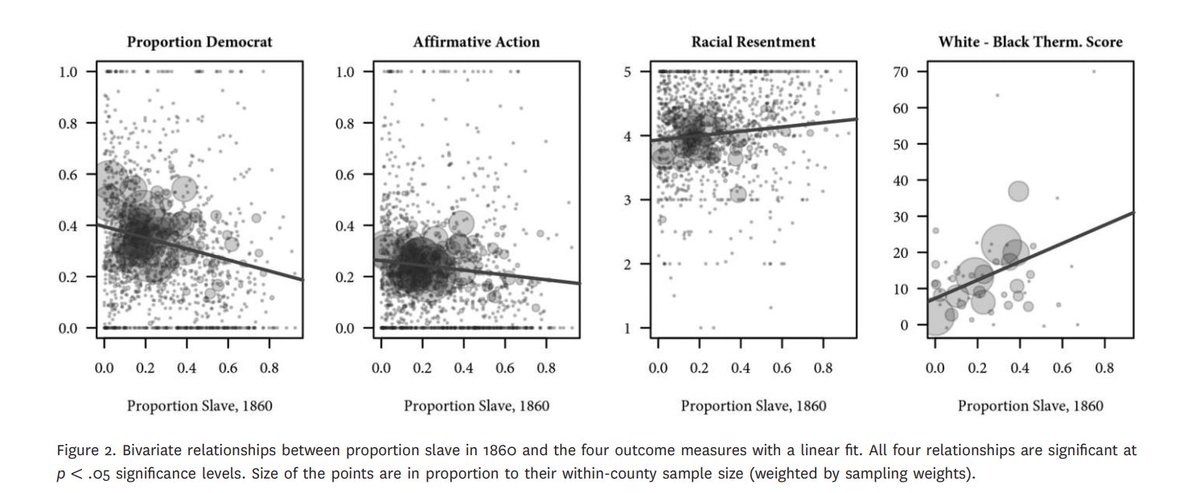
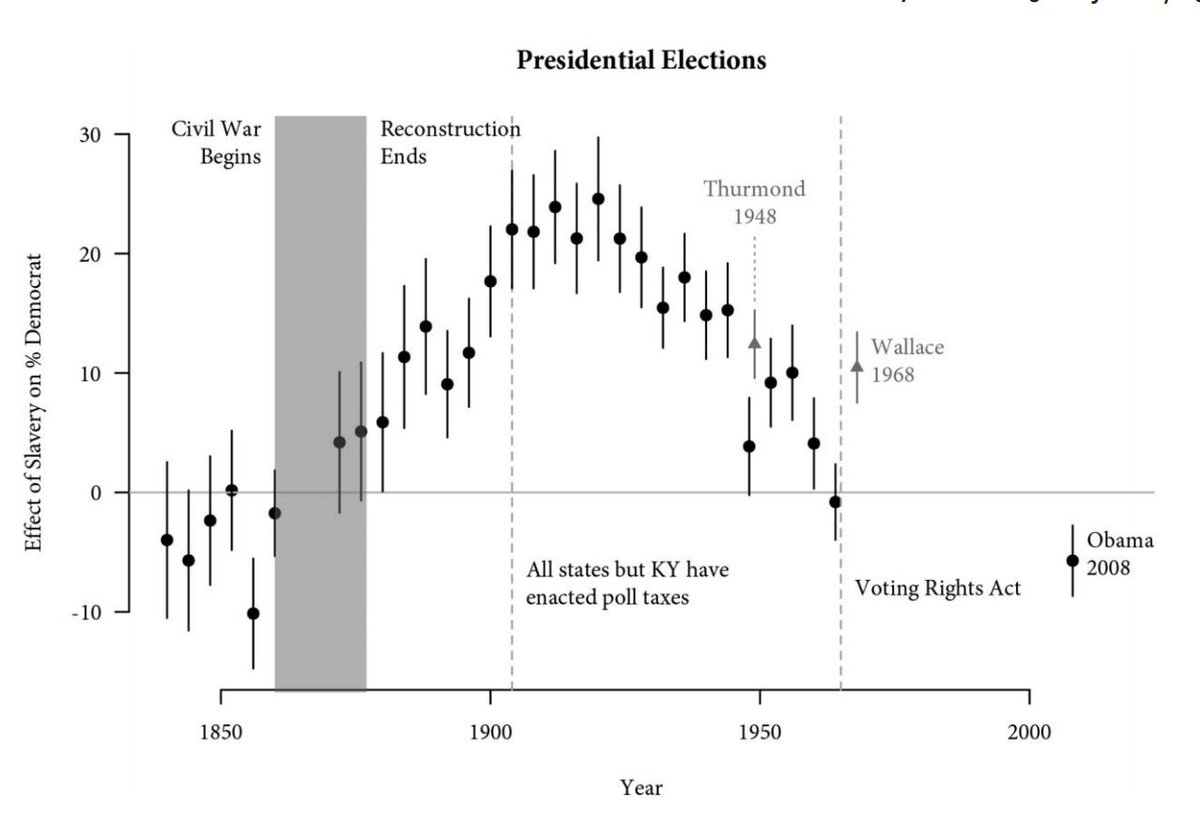
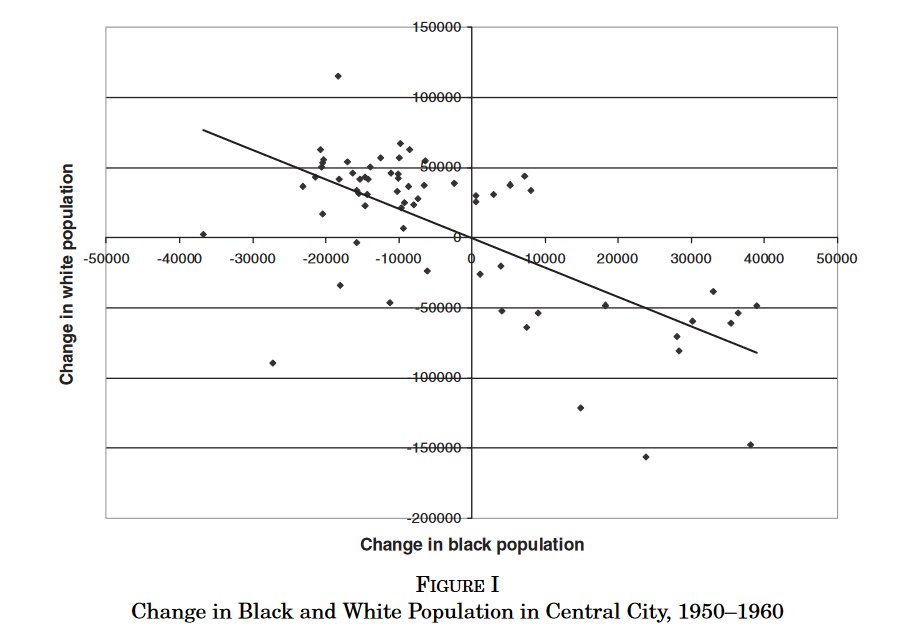 due to white flight. For 1910-30, Shertzer ( @econhist_allday)/Walsh ( @econtrout) find 1 black arrival led to 1.9-3.4 white departures. For 1940-70, Boustan ( @leah_boustan) finds 2.7 white departures. https://doi.org/10.1162/r... href=" https://doi.org/10.1162/qjec.2010.125.1.417">https://doi.org/10.1162/q..." title="10) Back to segregation. Seg https://abs.twimg.com/emoji/v2/... draggable="false" alt="📈" title="Tabelle mit Aufwärtstrend" aria-label="Emoji: Tabelle mit Aufwärtstrend">due to white flight. For 1910-30, Shertzer ( @econhist_allday)/Walsh ( @econtrout) find 1 black arrival led to 1.9-3.4 white departures. For 1940-70, Boustan ( @leah_boustan) finds 2.7 white departures. https://doi.org/10.1162/r... href=" https://doi.org/10.1162/qjec.2010.125.1.417">https://doi.org/10.1162/q...">
due to white flight. For 1910-30, Shertzer ( @econhist_allday)/Walsh ( @econtrout) find 1 black arrival led to 1.9-3.4 white departures. For 1940-70, Boustan ( @leah_boustan) finds 2.7 white departures. https://doi.org/10.1162/r... href=" https://doi.org/10.1162/qjec.2010.125.1.417">https://doi.org/10.1162/q..." title="10) Back to segregation. Seg https://abs.twimg.com/emoji/v2/... draggable="false" alt="📈" title="Tabelle mit Aufwärtstrend" aria-label="Emoji: Tabelle mit Aufwärtstrend">due to white flight. For 1910-30, Shertzer ( @econhist_allday)/Walsh ( @econtrout) find 1 black arrival led to 1.9-3.4 white departures. For 1940-70, Boustan ( @leah_boustan) finds 2.7 white departures. https://doi.org/10.1162/r... href=" https://doi.org/10.1162/qjec.2010.125.1.417">https://doi.org/10.1162/q...">
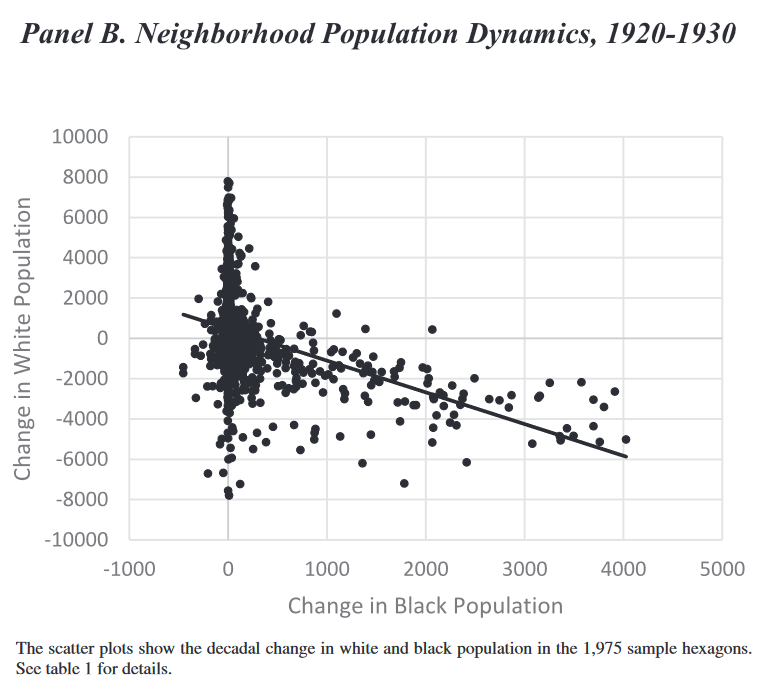 due to white flight. For 1910-30, Shertzer ( @econhist_allday)/Walsh ( @econtrout) find 1 black arrival led to 1.9-3.4 white departures. For 1940-70, Boustan ( @leah_boustan) finds 2.7 white departures. https://doi.org/10.1162/r... href=" https://doi.org/10.1162/qjec.2010.125.1.417">https://doi.org/10.1162/q..." title="10) Back to segregation. Seg https://abs.twimg.com/emoji/v2/... draggable="false" alt="📈" title="Tabelle mit Aufwärtstrend" aria-label="Emoji: Tabelle mit Aufwärtstrend">due to white flight. For 1910-30, Shertzer ( @econhist_allday)/Walsh ( @econtrout) find 1 black arrival led to 1.9-3.4 white departures. For 1940-70, Boustan ( @leah_boustan) finds 2.7 white departures. https://doi.org/10.1162/r... href=" https://doi.org/10.1162/qjec.2010.125.1.417">https://doi.org/10.1162/q...">
due to white flight. For 1910-30, Shertzer ( @econhist_allday)/Walsh ( @econtrout) find 1 black arrival led to 1.9-3.4 white departures. For 1940-70, Boustan ( @leah_boustan) finds 2.7 white departures. https://doi.org/10.1162/r... href=" https://doi.org/10.1162/qjec.2010.125.1.417">https://doi.org/10.1162/q..." title="10) Back to segregation. Seg https://abs.twimg.com/emoji/v2/... draggable="false" alt="📈" title="Tabelle mit Aufwärtstrend" aria-label="Emoji: Tabelle mit Aufwärtstrend">due to white flight. For 1910-30, Shertzer ( @econhist_allday)/Walsh ( @econtrout) find 1 black arrival led to 1.9-3.4 white departures. For 1940-70, Boustan ( @leah_boustan) finds 2.7 white departures. https://doi.org/10.1162/r... href=" https://doi.org/10.1162/qjec.2010.125.1.417">https://doi.org/10.1162/q...">
 https://www.jstor.org/stable/j...." title="12) The Great Migration led to large economic gains. Collins/Wanamaker ( @mwanamak) find that the Migration explains a significant amount of black-white convergence between 1910 and 1930. See @leah_boustan‘s book on the migration. https://www.aeaweb.org/articles... href=" https://www.jstor.org/stable/j.ctt1q1xrc2">https://www.jstor.org/stable/j....">
https://www.jstor.org/stable/j...." title="12) The Great Migration led to large economic gains. Collins/Wanamaker ( @mwanamak) find that the Migration explains a significant amount of black-white convergence between 1910 and 1930. See @leah_boustan‘s book on the migration. https://www.aeaweb.org/articles... href=" https://www.jstor.org/stable/j.ctt1q1xrc2">https://www.jstor.org/stable/j....">
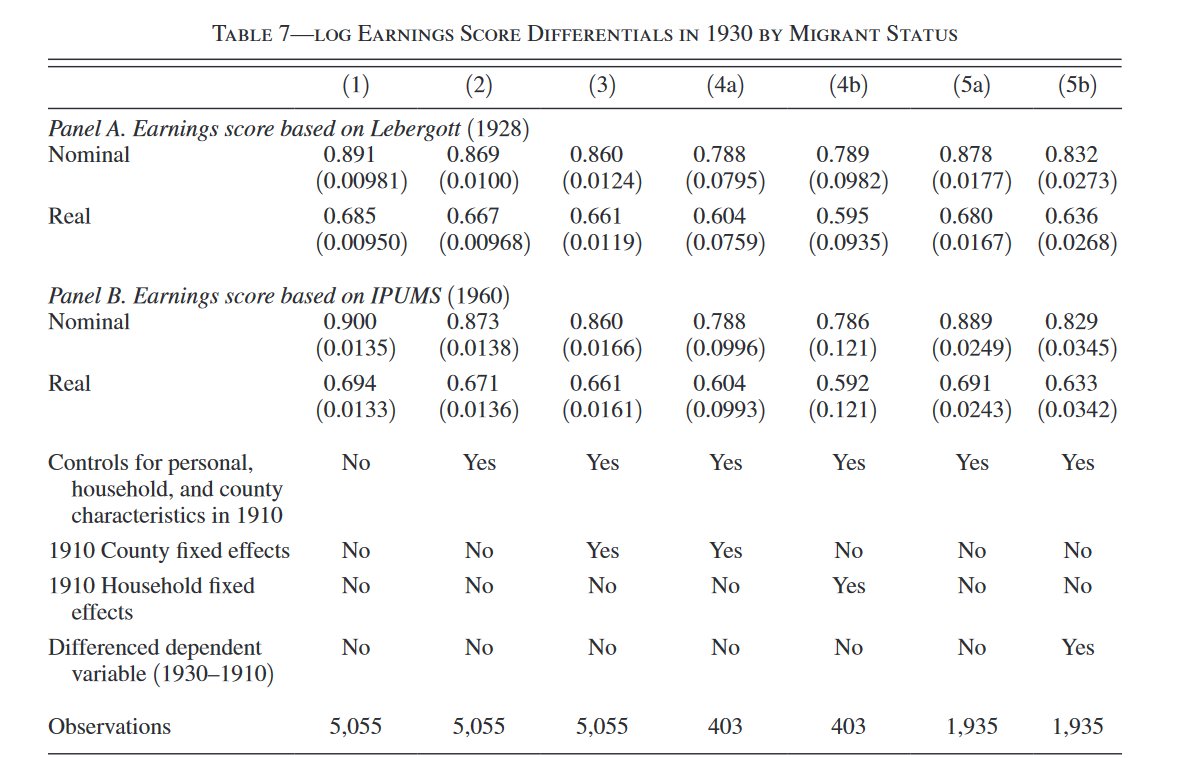 https://www.jstor.org/stable/j...." title="12) The Great Migration led to large economic gains. Collins/Wanamaker ( @mwanamak) find that the Migration explains a significant amount of black-white convergence between 1910 and 1930. See @leah_boustan‘s book on the migration. https://www.aeaweb.org/articles... href=" https://www.jstor.org/stable/j.ctt1q1xrc2">https://www.jstor.org/stable/j....">
https://www.jstor.org/stable/j...." title="12) The Great Migration led to large economic gains. Collins/Wanamaker ( @mwanamak) find that the Migration explains a significant amount of black-white convergence between 1910 and 1930. See @leah_boustan‘s book on the migration. https://www.aeaweb.org/articles... href=" https://www.jstor.org/stable/j.ctt1q1xrc2">https://www.jstor.org/stable/j....">
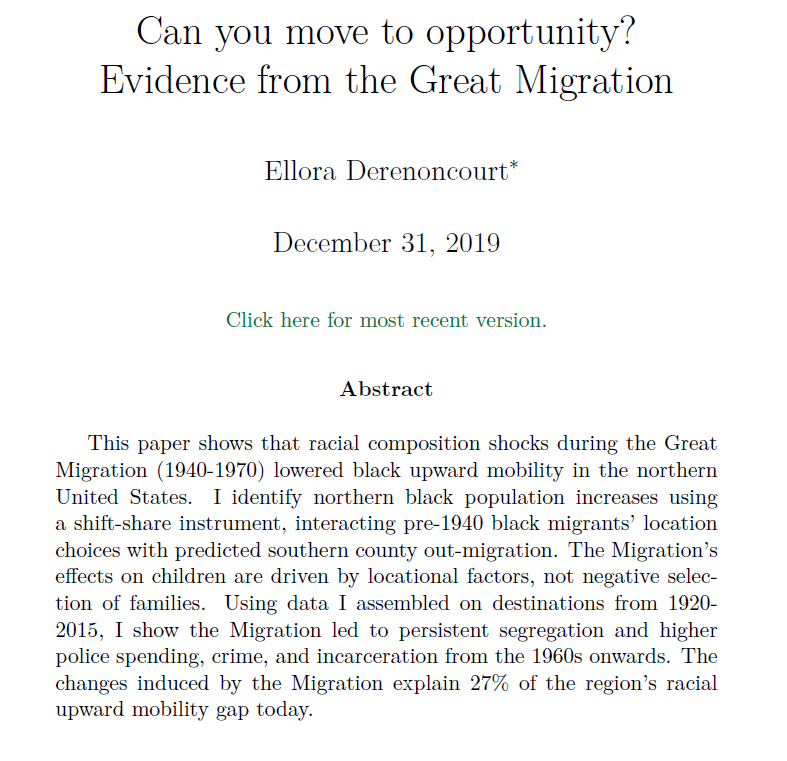
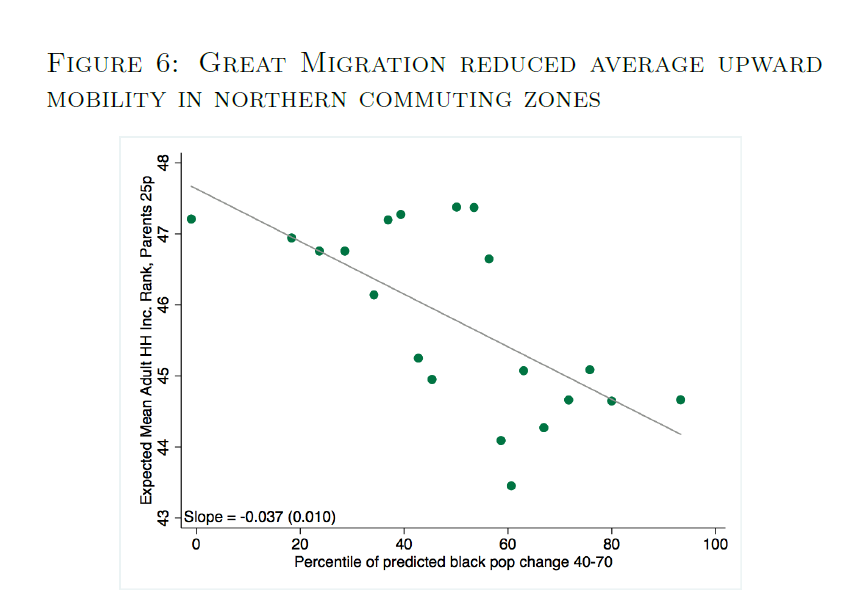

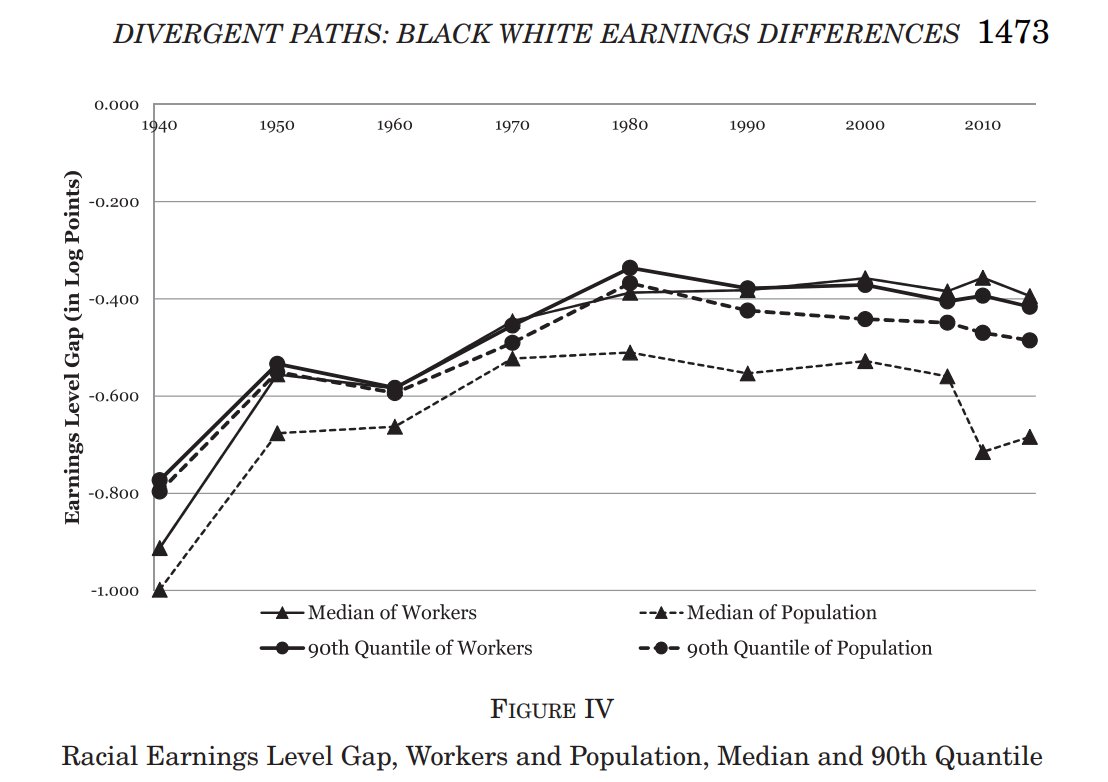
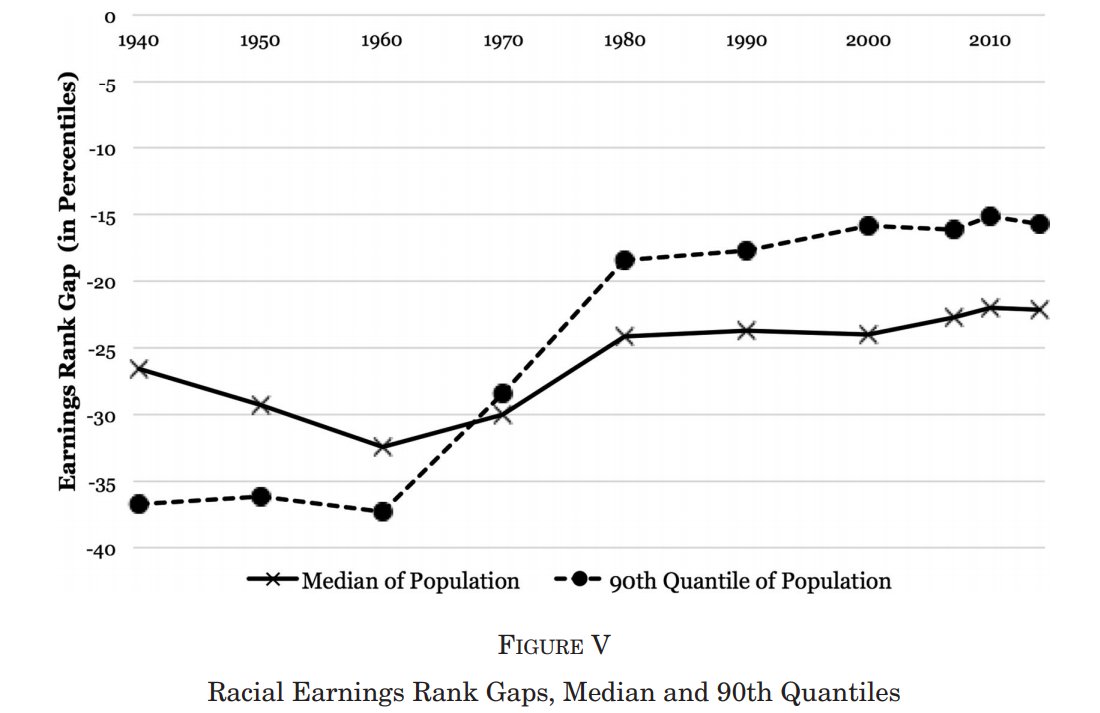
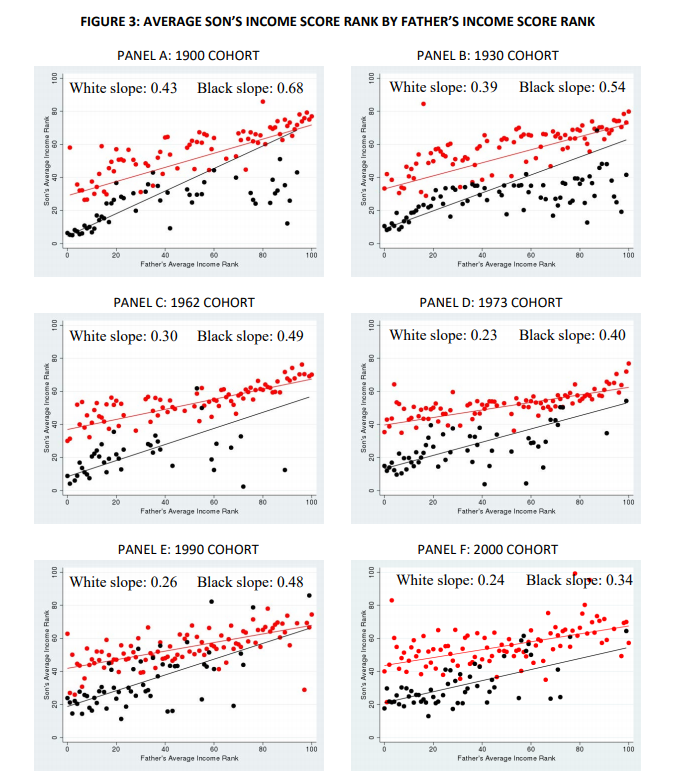

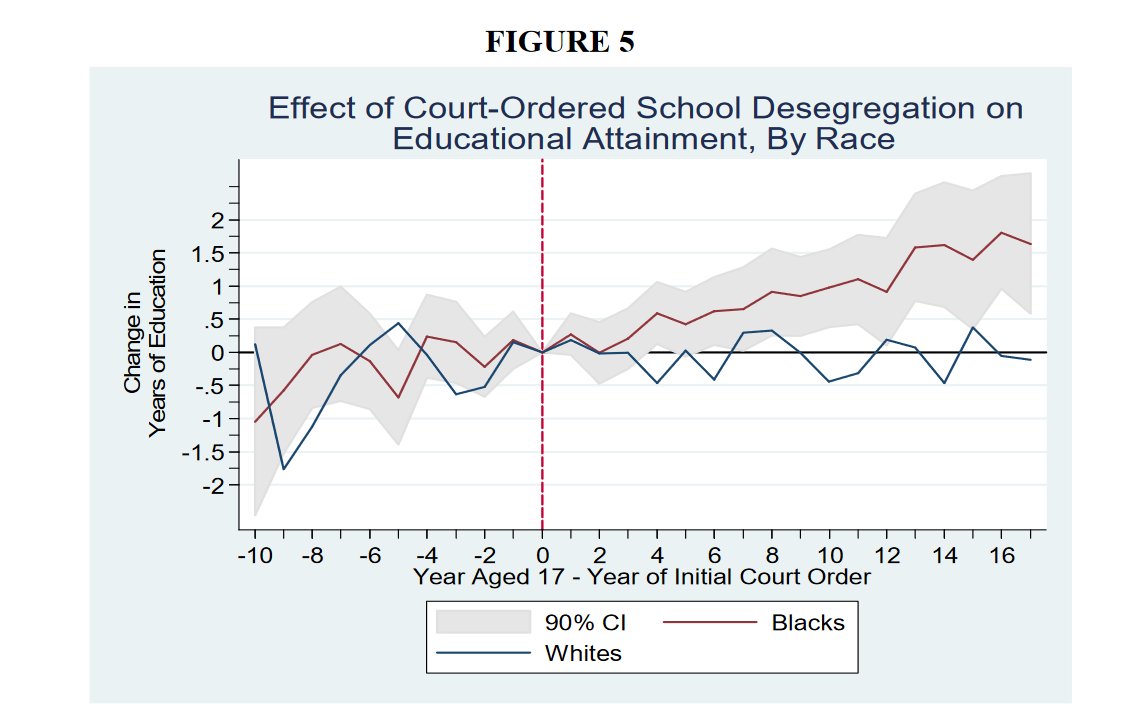
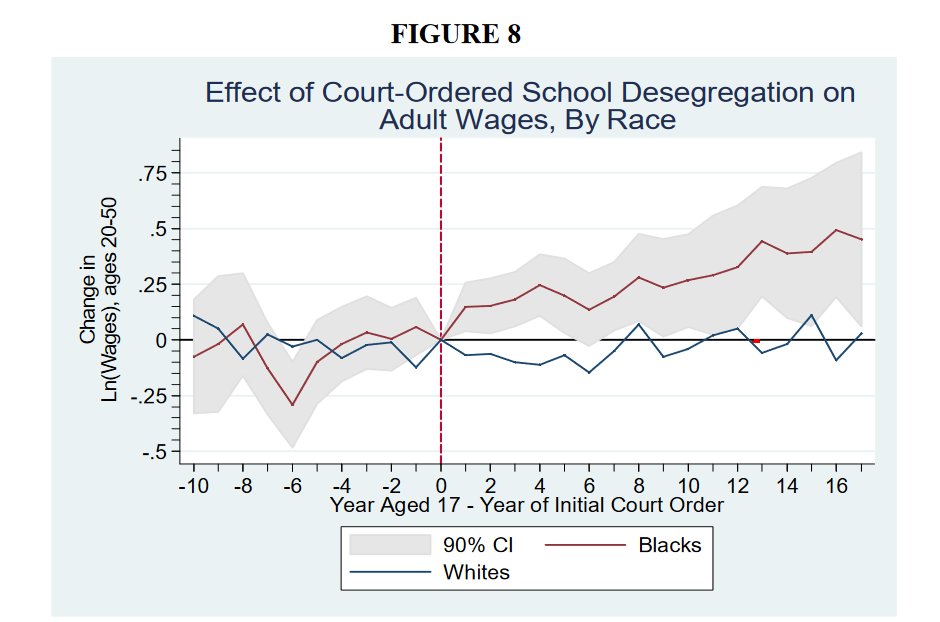
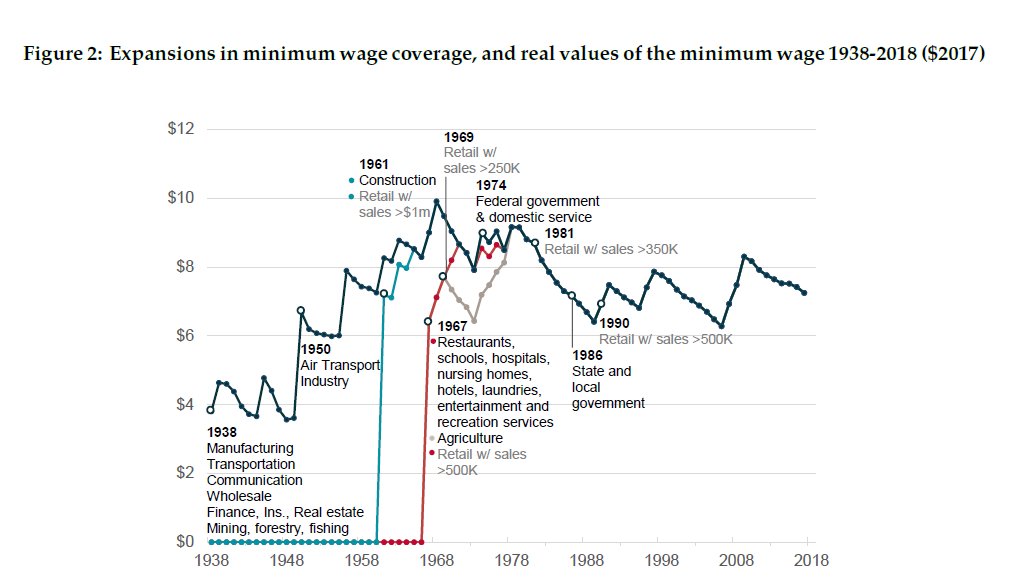
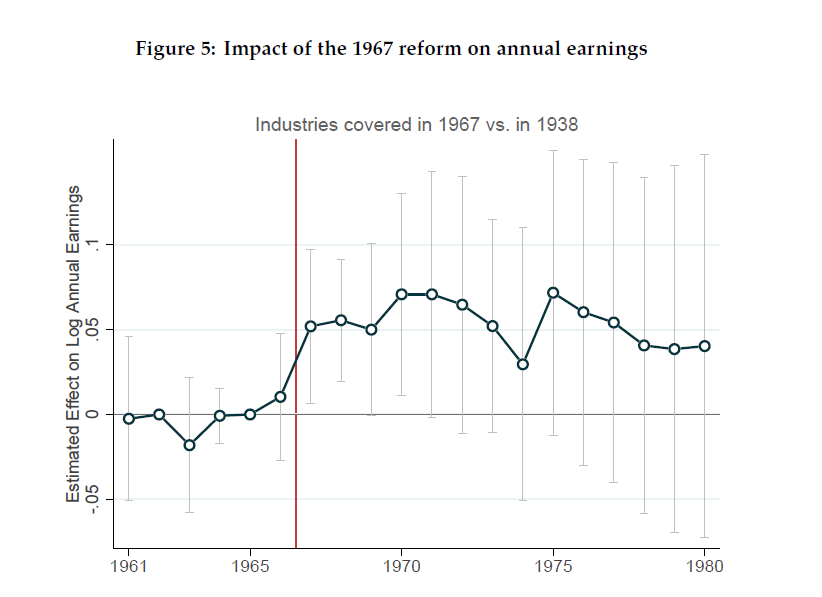




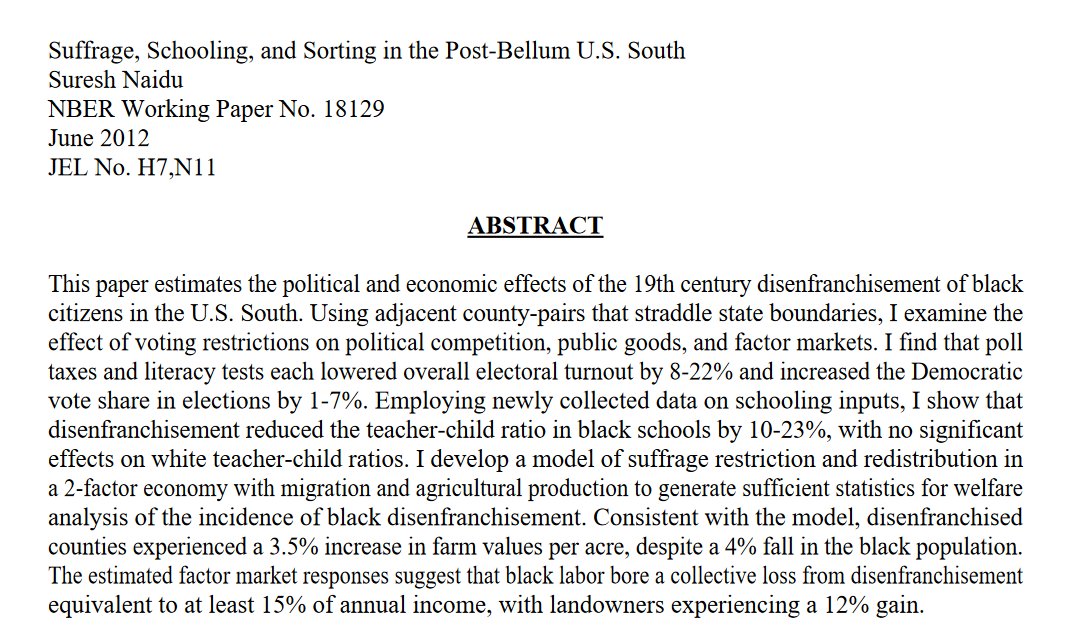
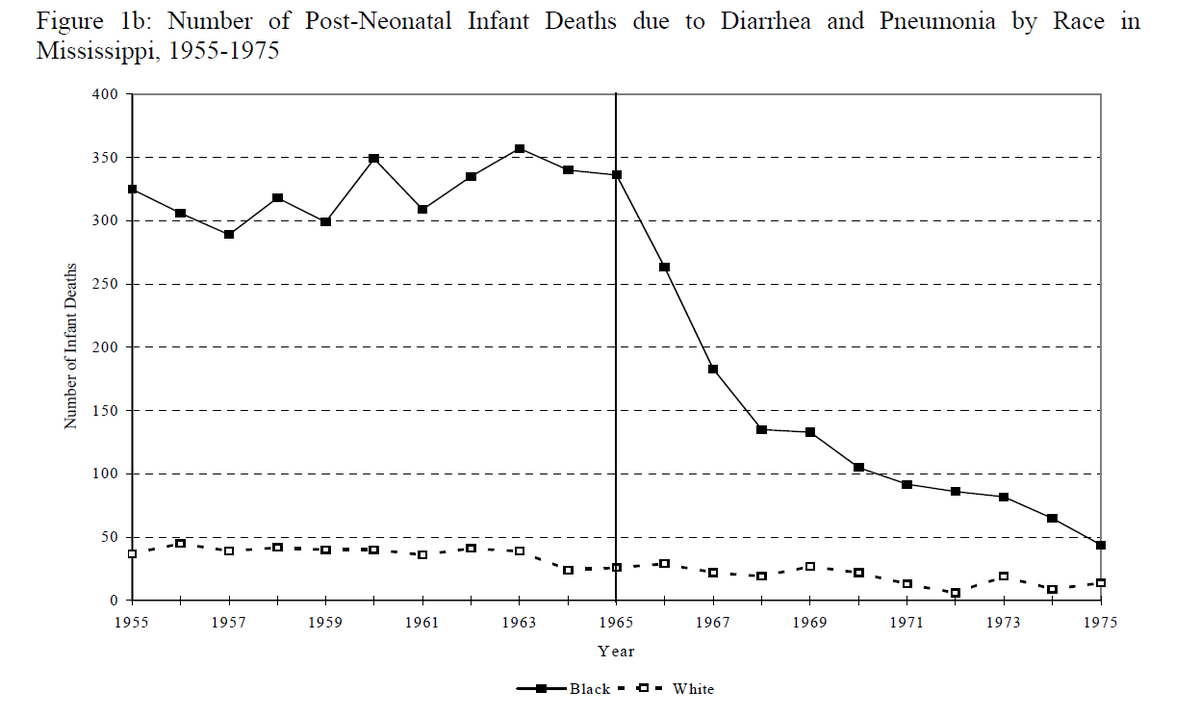 https://www.nber.org/papers/w1..." title="20) Desegregation didn& #39;t just happen for schools. Desegregation of hospitals reduced the infant mortality gap and educational gap decades later. (Almond/Chay/Greenstone + Chay/Guryan/ @BhashMazumder) https://papers.ssrn.com/sol3/pape... href=" https://www.nber.org/papers/w15078 ">https://www.nber.org/papers/w1...">
https://www.nber.org/papers/w1..." title="20) Desegregation didn& #39;t just happen for schools. Desegregation of hospitals reduced the infant mortality gap and educational gap decades later. (Almond/Chay/Greenstone + Chay/Guryan/ @BhashMazumder) https://papers.ssrn.com/sol3/pape... href=" https://www.nber.org/papers/w15078 ">https://www.nber.org/papers/w1...">
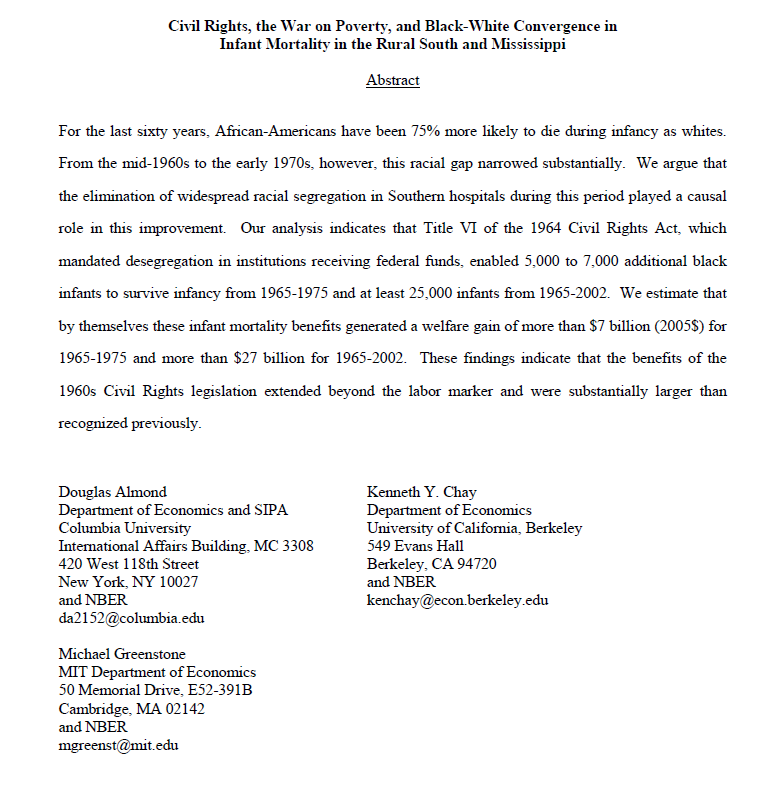 https://www.nber.org/papers/w1..." title="20) Desegregation didn& #39;t just happen for schools. Desegregation of hospitals reduced the infant mortality gap and educational gap decades later. (Almond/Chay/Greenstone + Chay/Guryan/ @BhashMazumder) https://papers.ssrn.com/sol3/pape... href=" https://www.nber.org/papers/w15078 ">https://www.nber.org/papers/w1...">
https://www.nber.org/papers/w1..." title="20) Desegregation didn& #39;t just happen for schools. Desegregation of hospitals reduced the infant mortality gap and educational gap decades later. (Almond/Chay/Greenstone + Chay/Guryan/ @BhashMazumder) https://papers.ssrn.com/sol3/pape... href=" https://www.nber.org/papers/w15078 ">https://www.nber.org/papers/w1...">
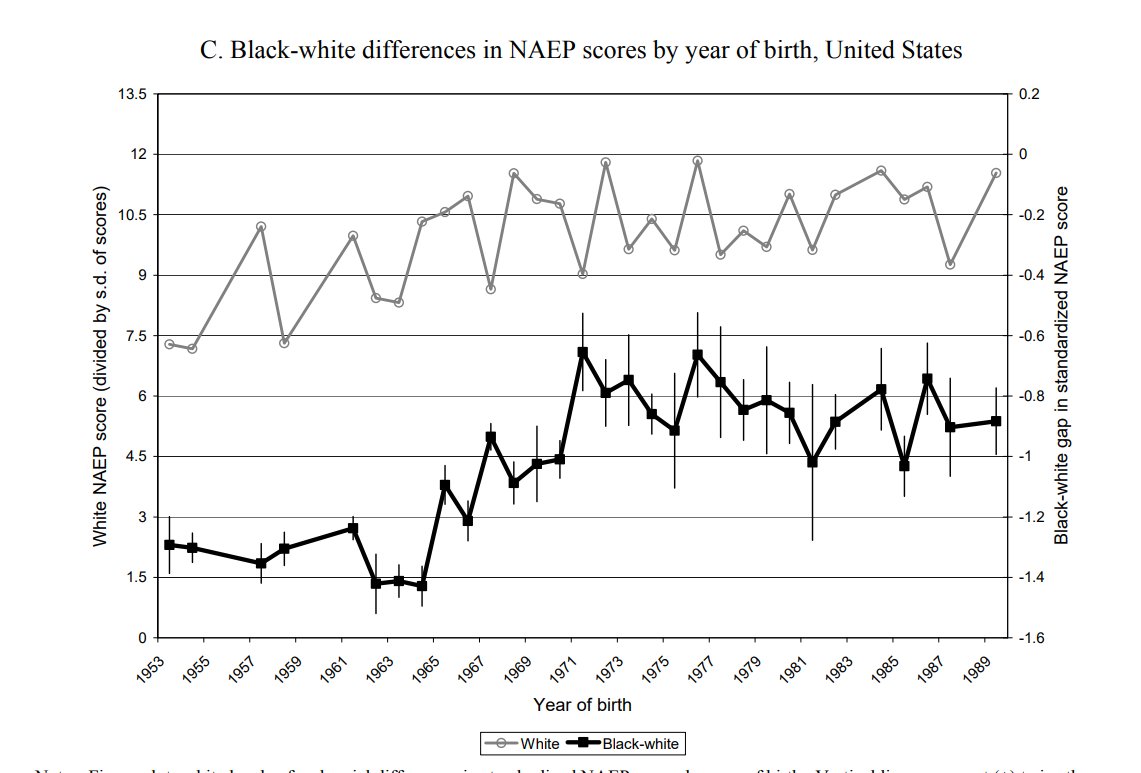 https://www.nber.org/papers/w1..." title="20) Desegregation didn& #39;t just happen for schools. Desegregation of hospitals reduced the infant mortality gap and educational gap decades later. (Almond/Chay/Greenstone + Chay/Guryan/ @BhashMazumder) https://papers.ssrn.com/sol3/pape... href=" https://www.nber.org/papers/w15078 ">https://www.nber.org/papers/w1...">
https://www.nber.org/papers/w1..." title="20) Desegregation didn& #39;t just happen for schools. Desegregation of hospitals reduced the infant mortality gap and educational gap decades later. (Almond/Chay/Greenstone + Chay/Guryan/ @BhashMazumder) https://papers.ssrn.com/sol3/pape... href=" https://www.nber.org/papers/w15078 ">https://www.nber.org/papers/w1...">
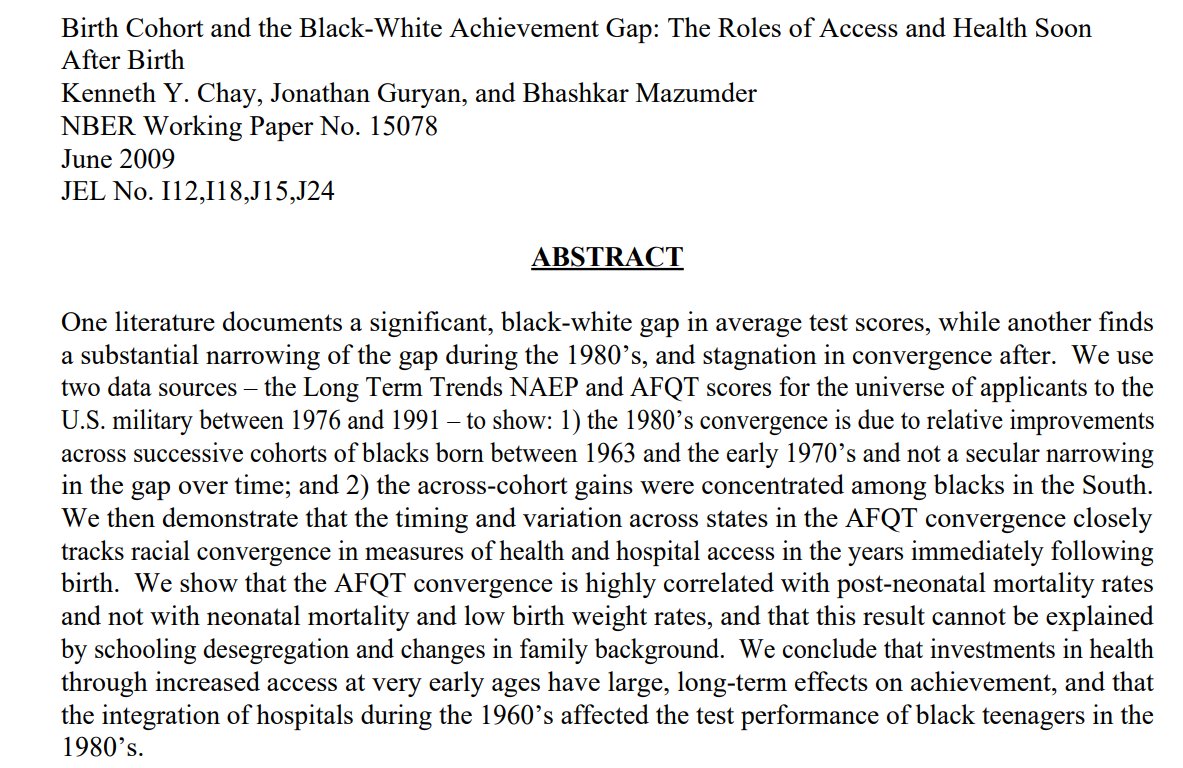 https://www.nber.org/papers/w1..." title="20) Desegregation didn& #39;t just happen for schools. Desegregation of hospitals reduced the infant mortality gap and educational gap decades later. (Almond/Chay/Greenstone + Chay/Guryan/ @BhashMazumder) https://papers.ssrn.com/sol3/pape... href=" https://www.nber.org/papers/w15078 ">https://www.nber.org/papers/w1...">
https://www.nber.org/papers/w1..." title="20) Desegregation didn& #39;t just happen for schools. Desegregation of hospitals reduced the infant mortality gap and educational gap decades later. (Almond/Chay/Greenstone + Chay/Guryan/ @BhashMazumder) https://papers.ssrn.com/sol3/pape... href=" https://www.nber.org/papers/w15078 ">https://www.nber.org/papers/w1...">
